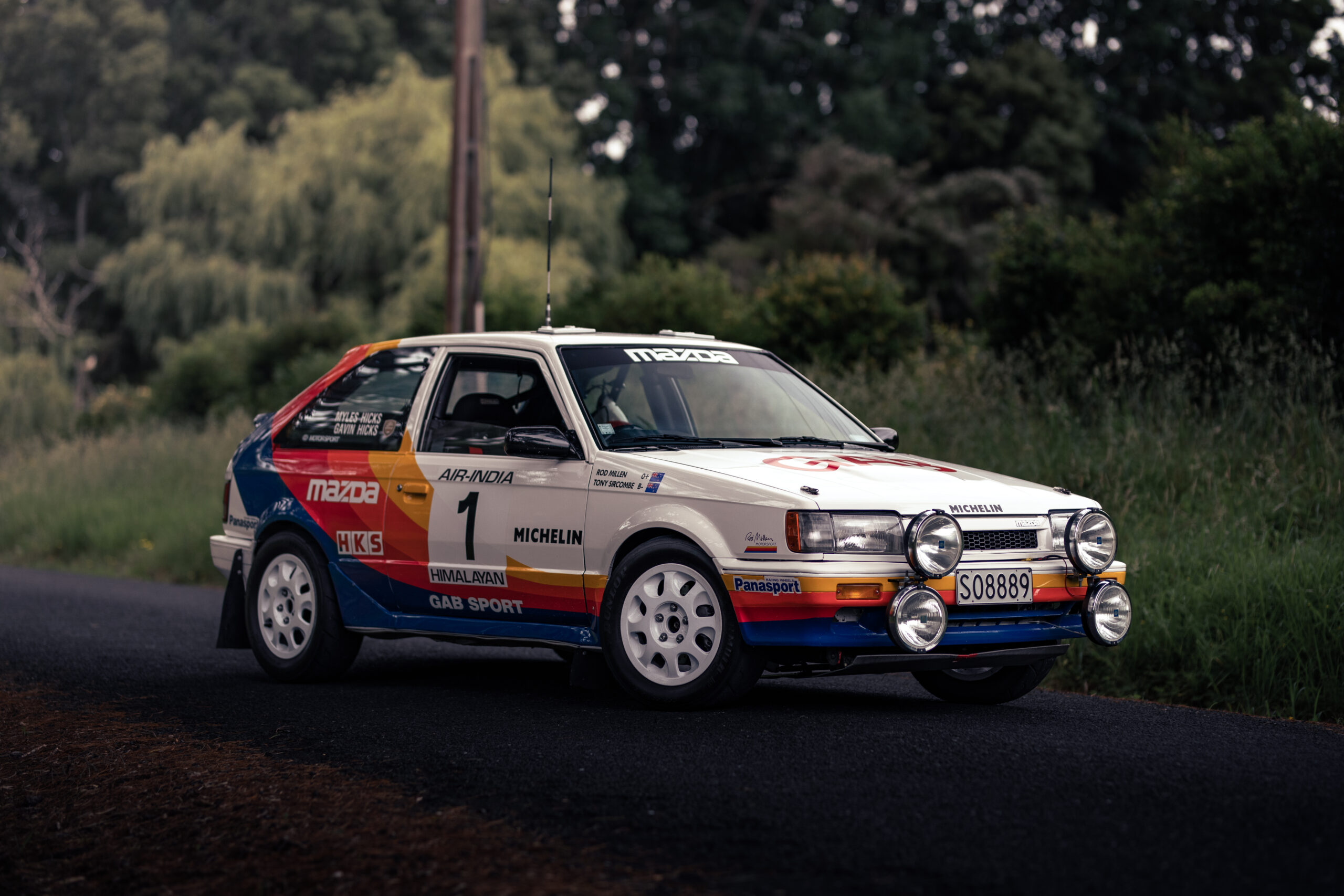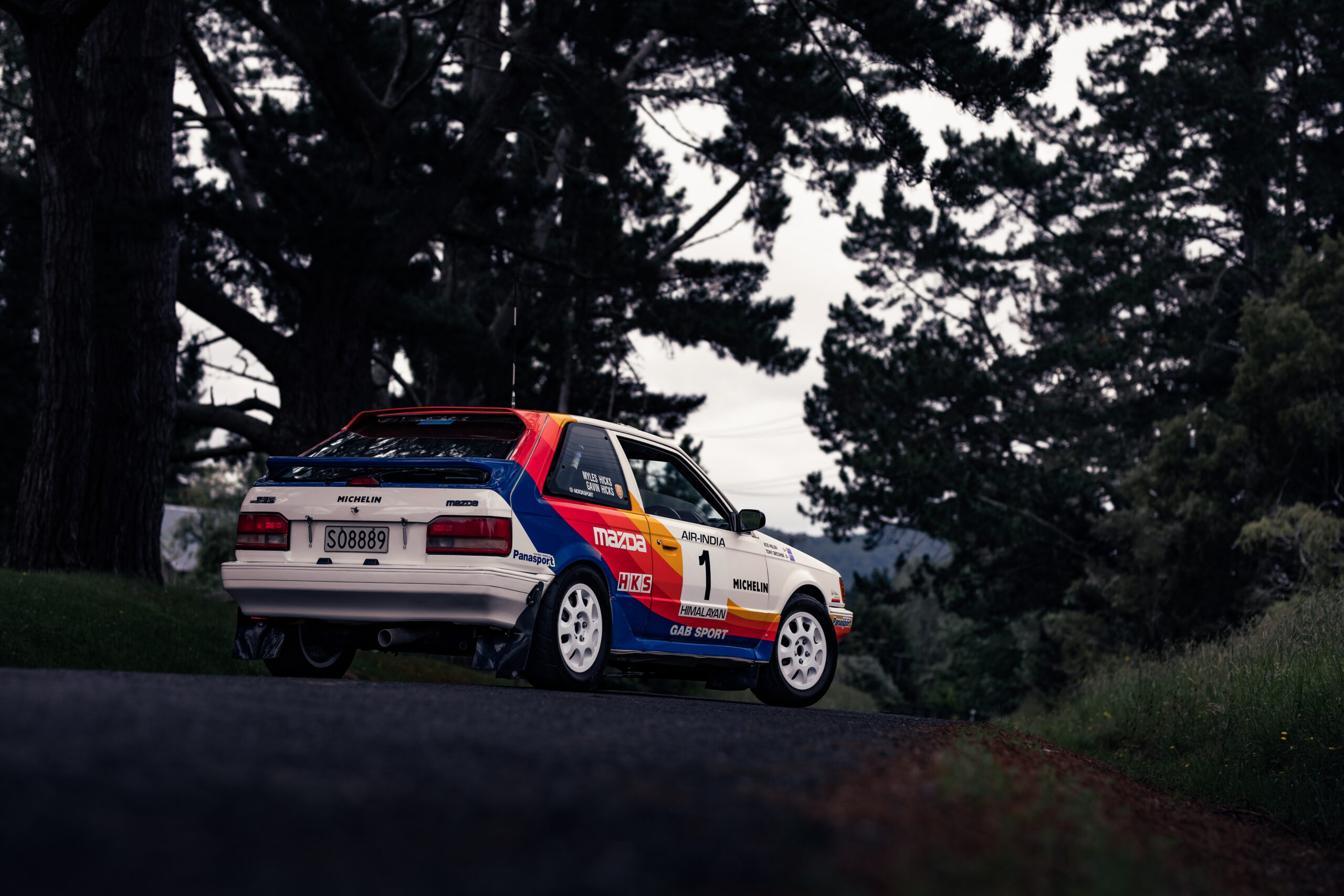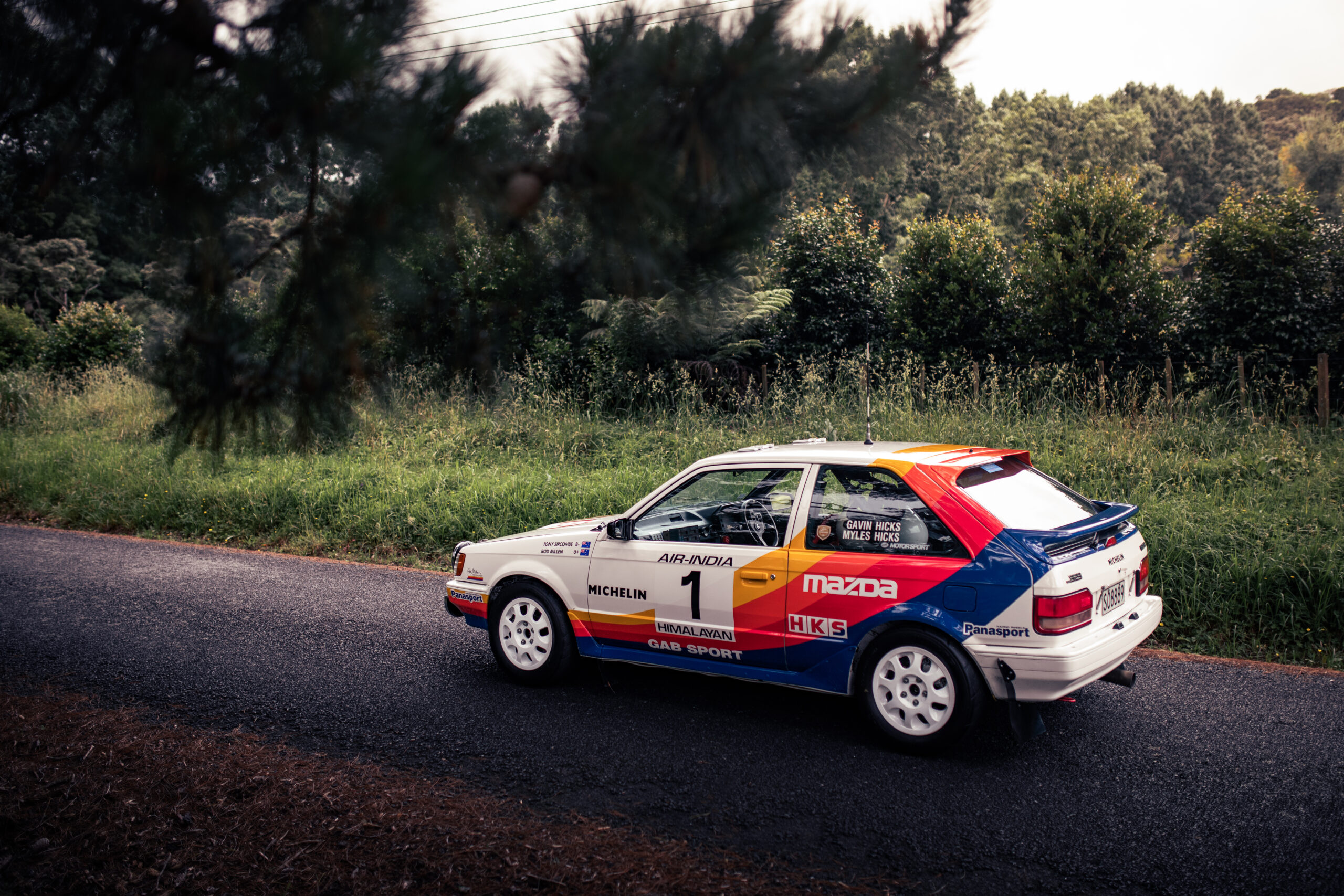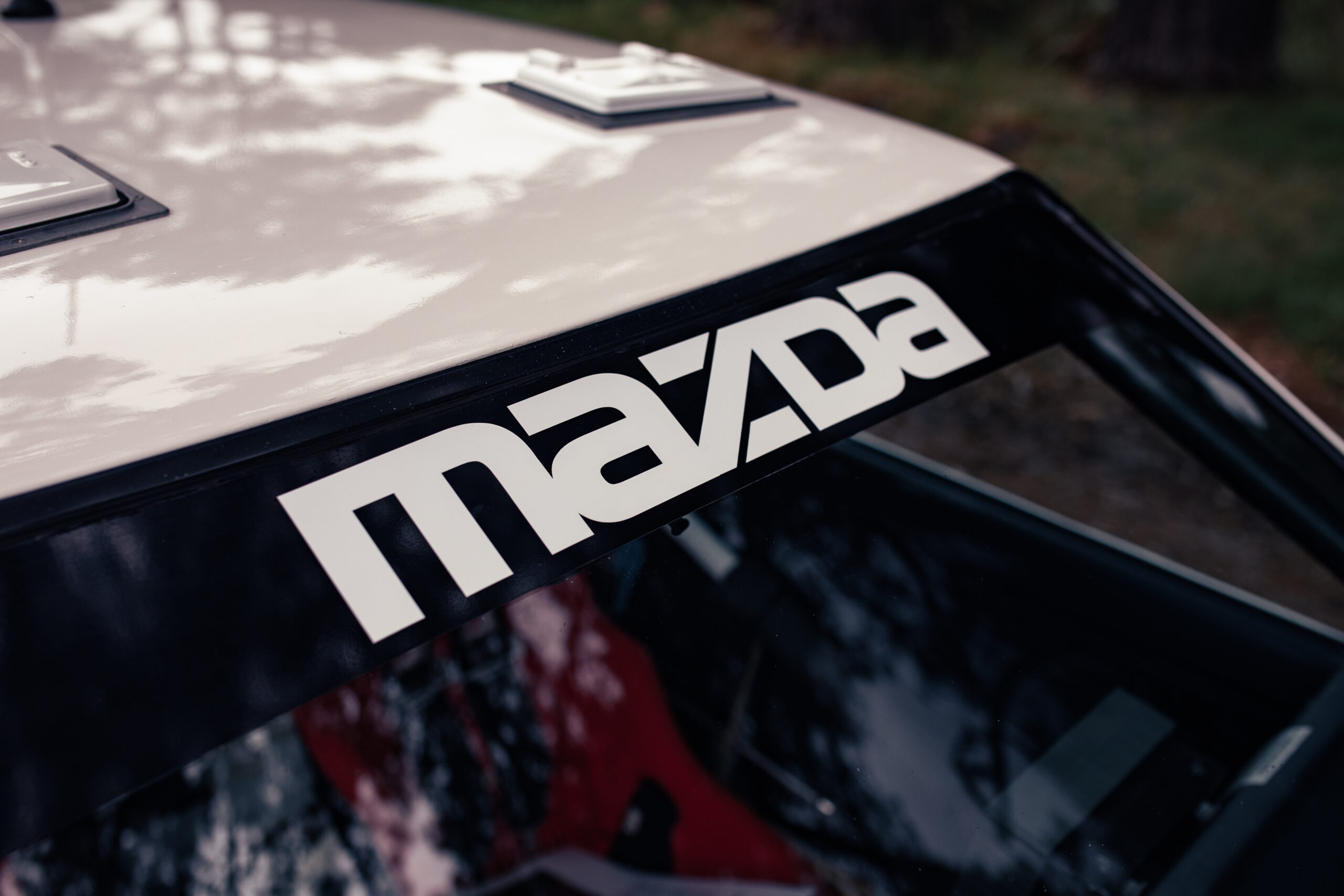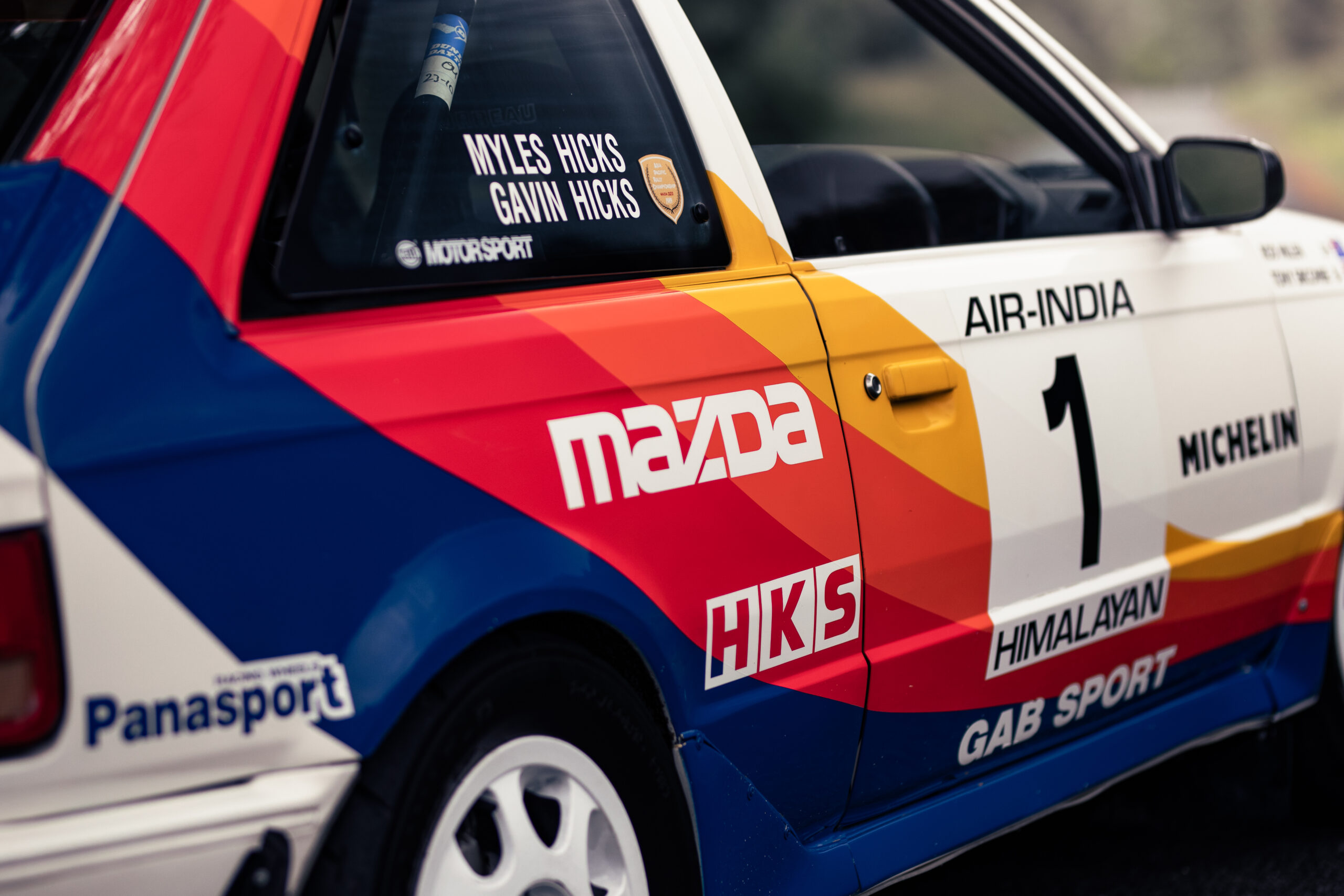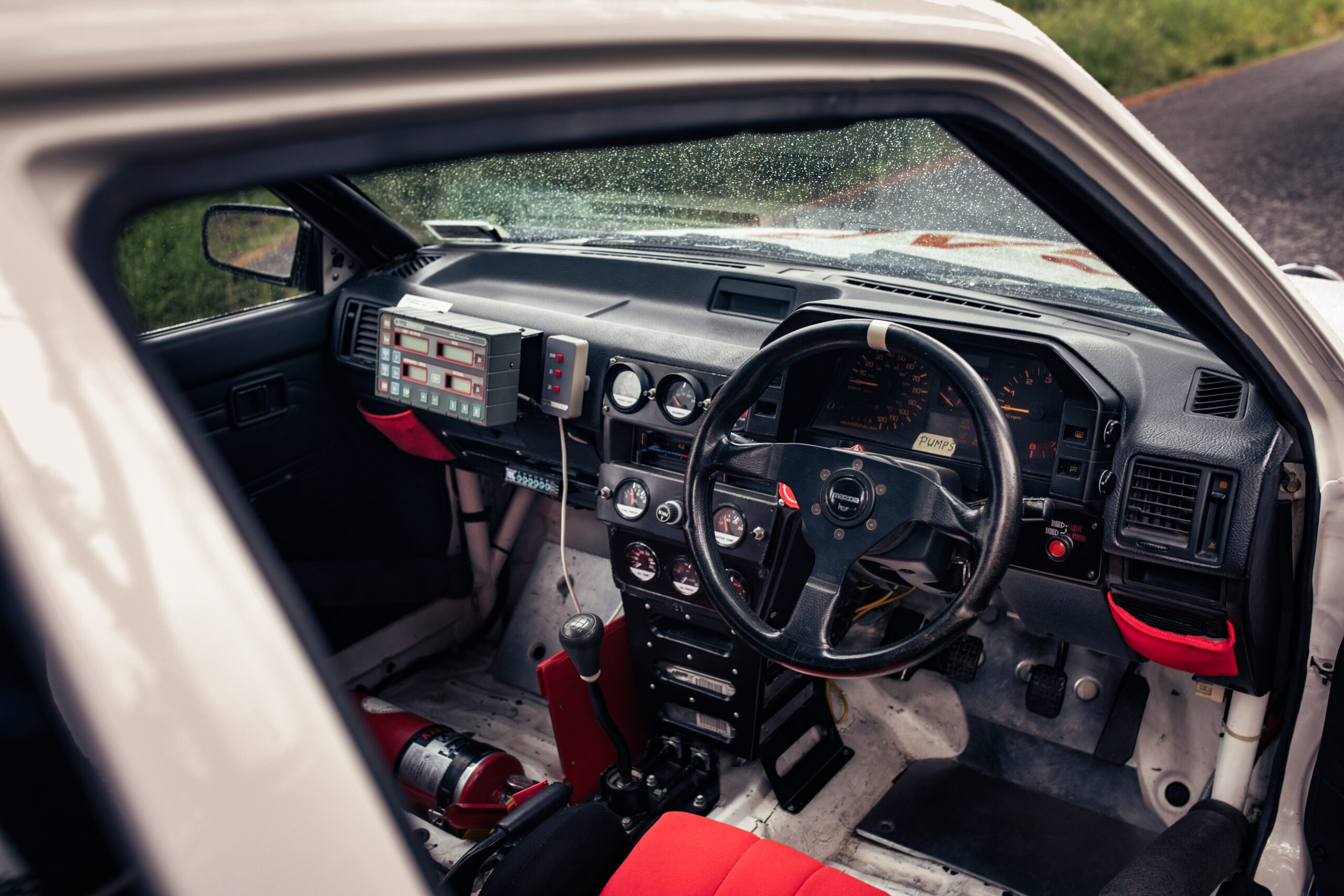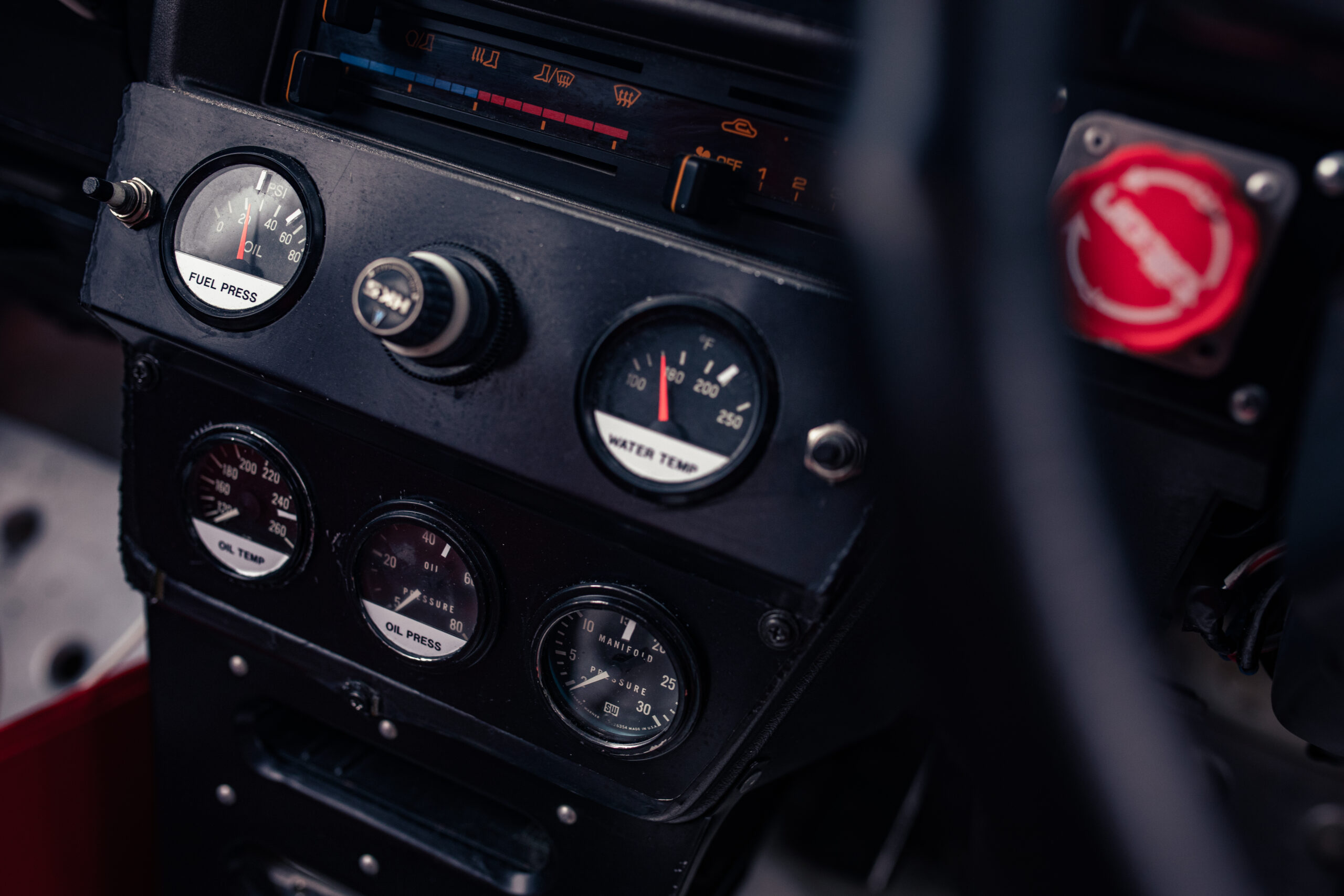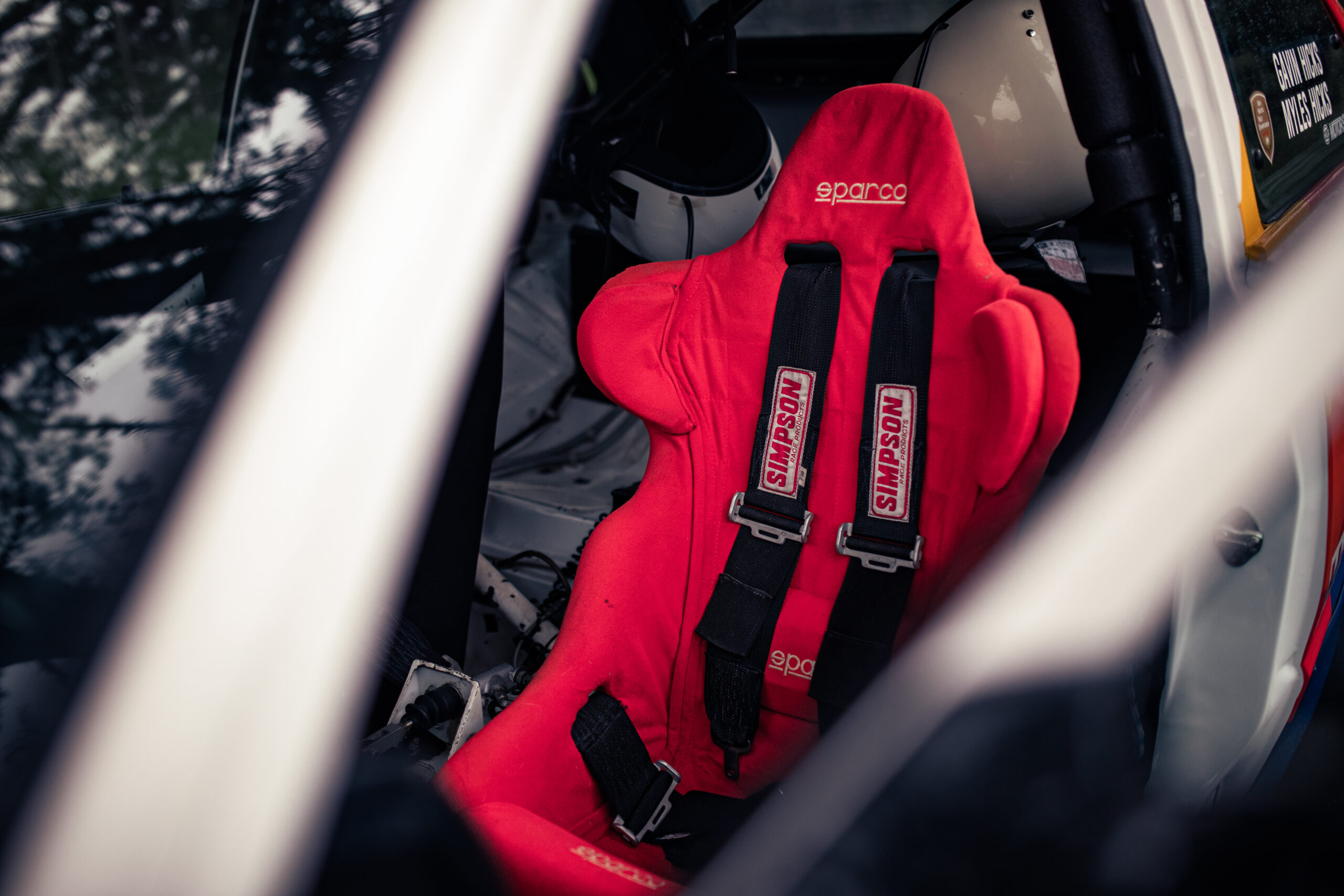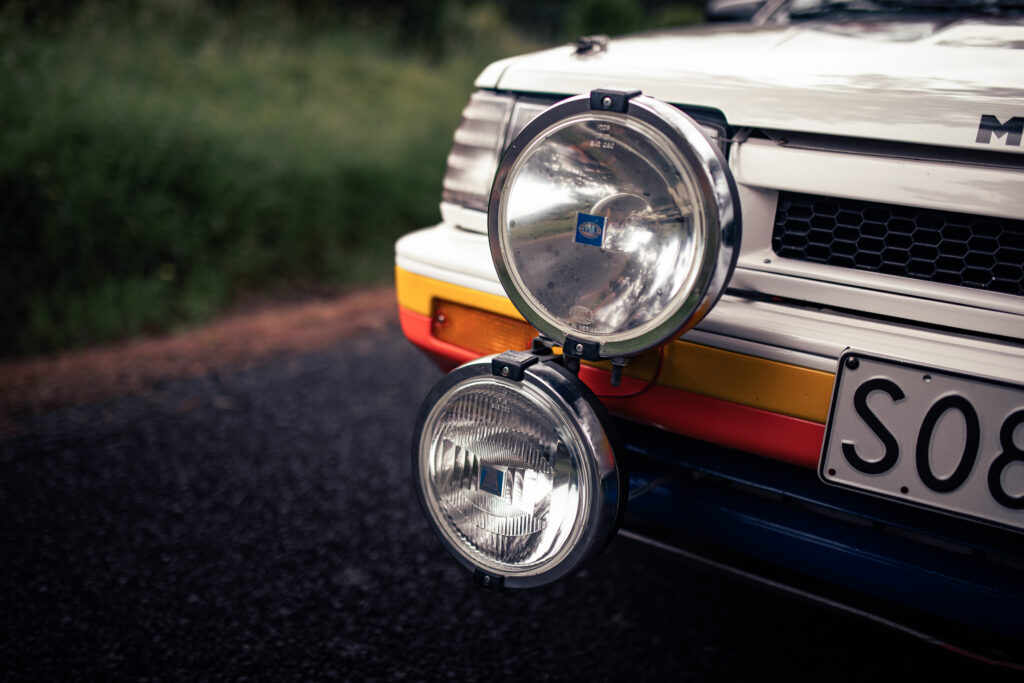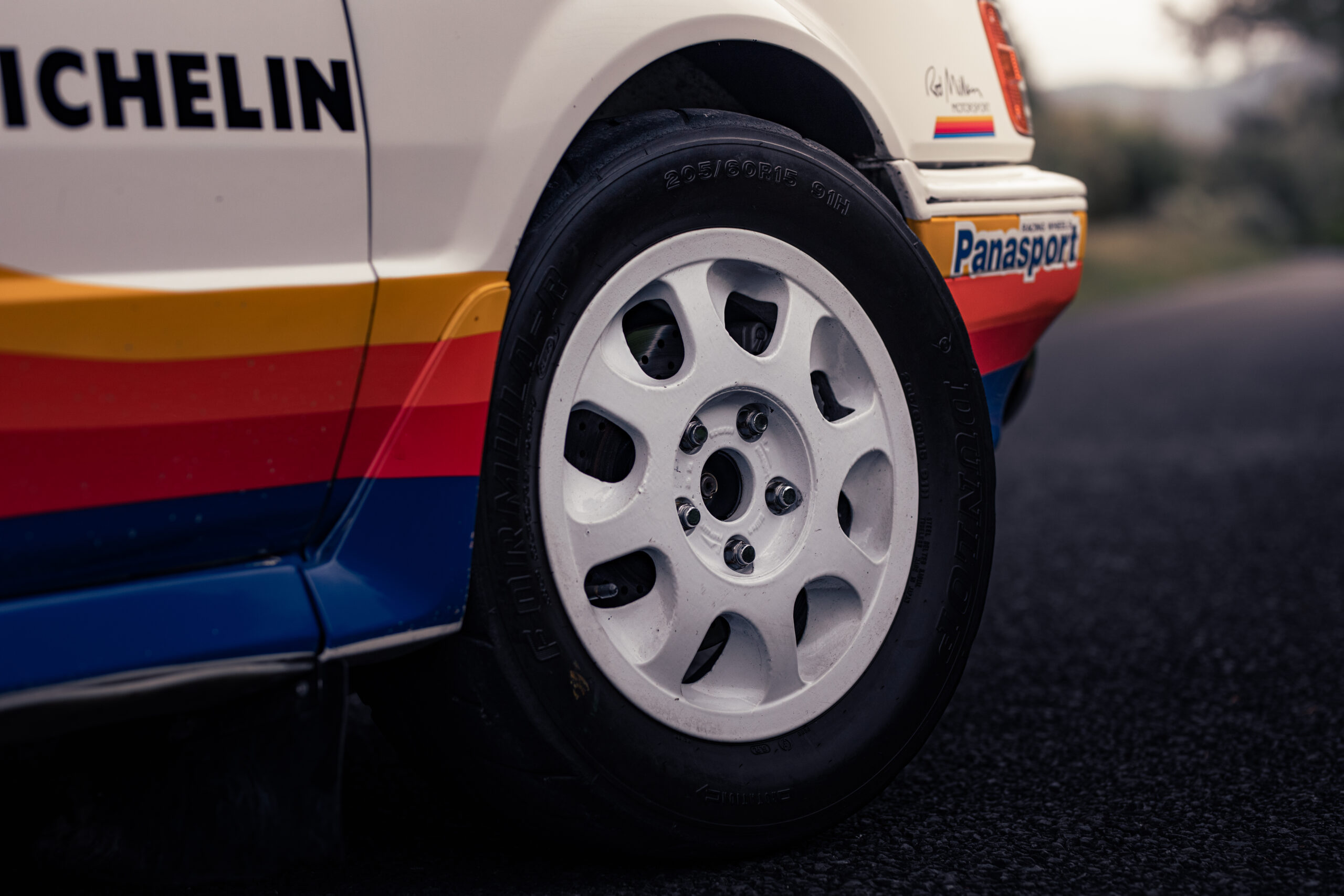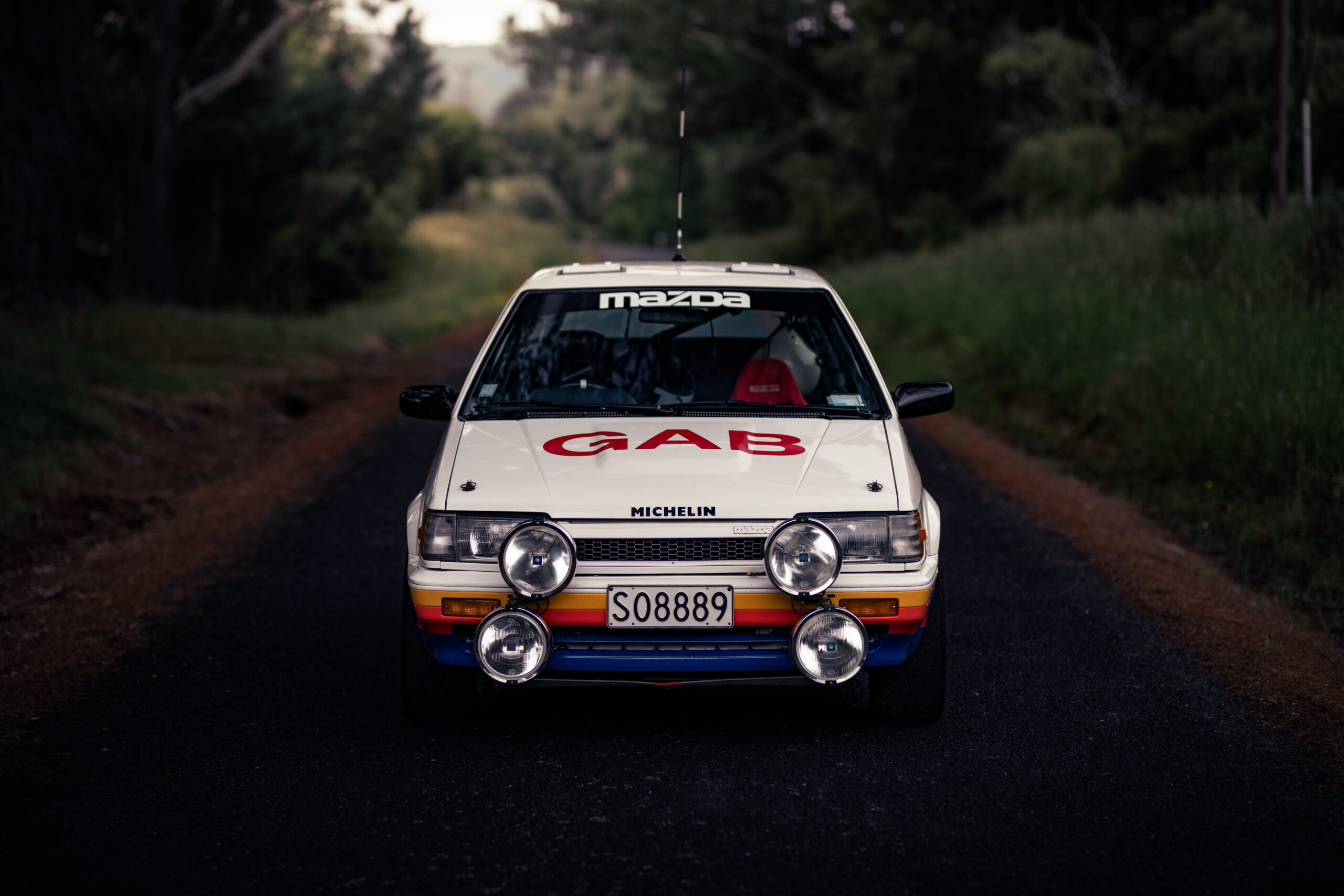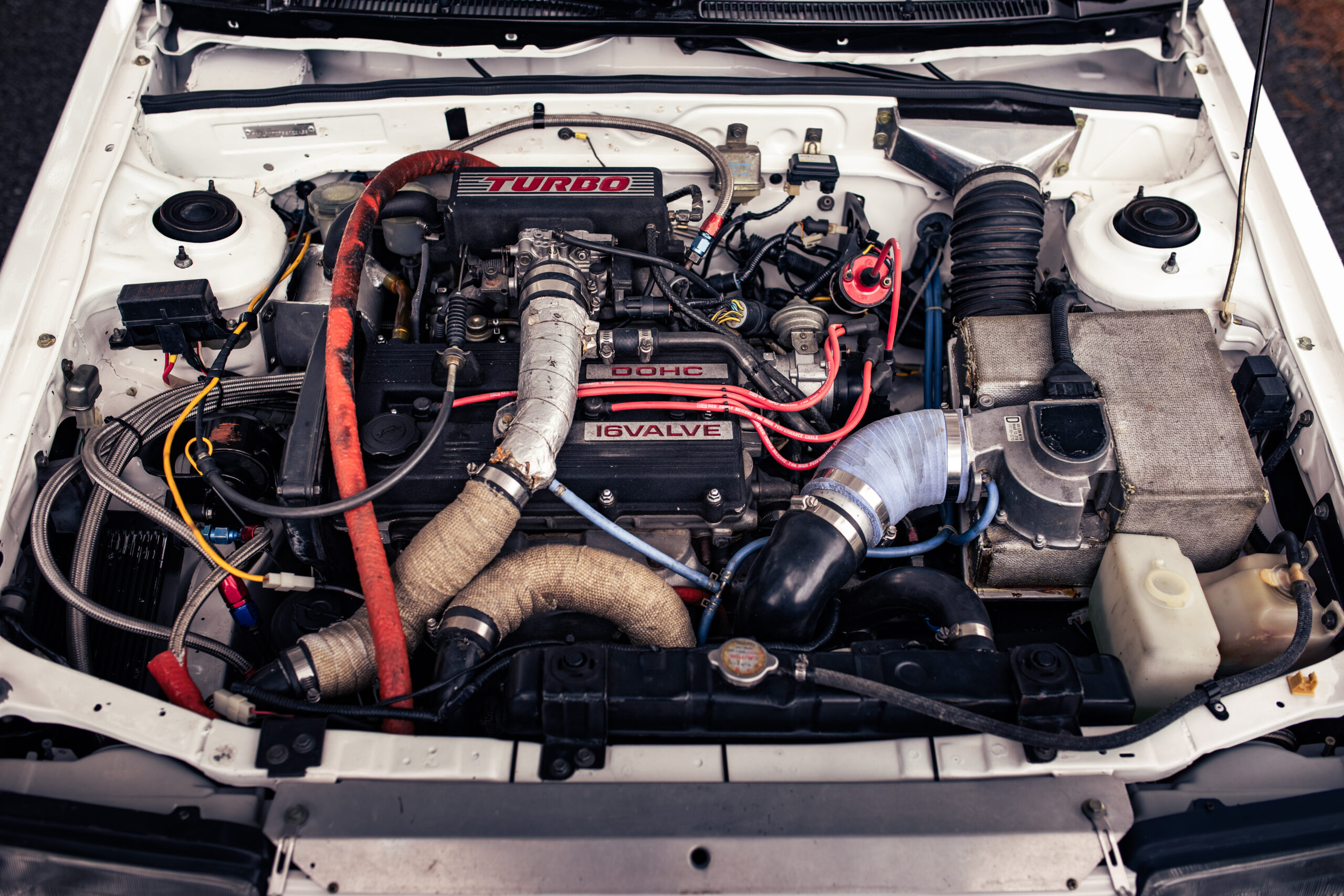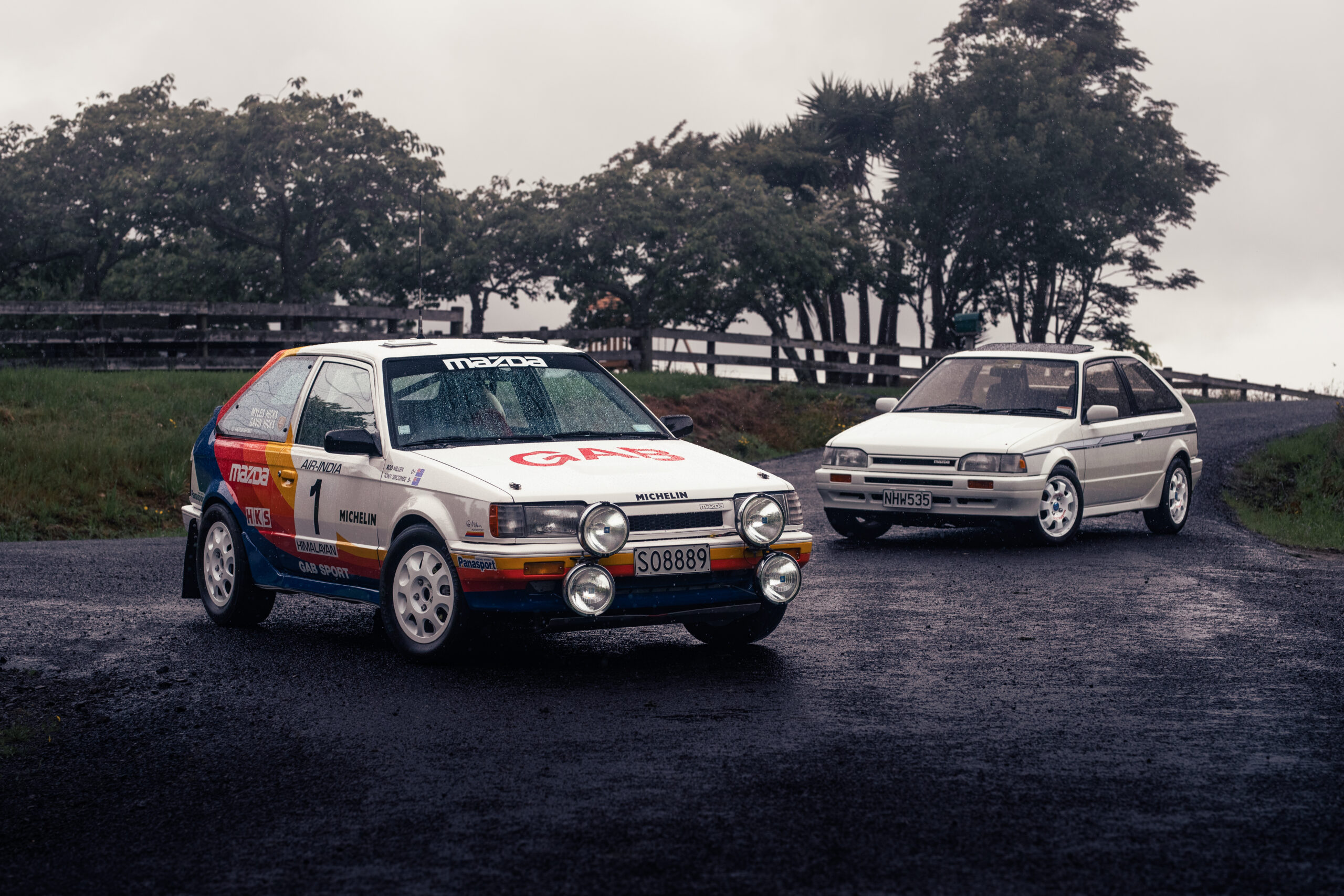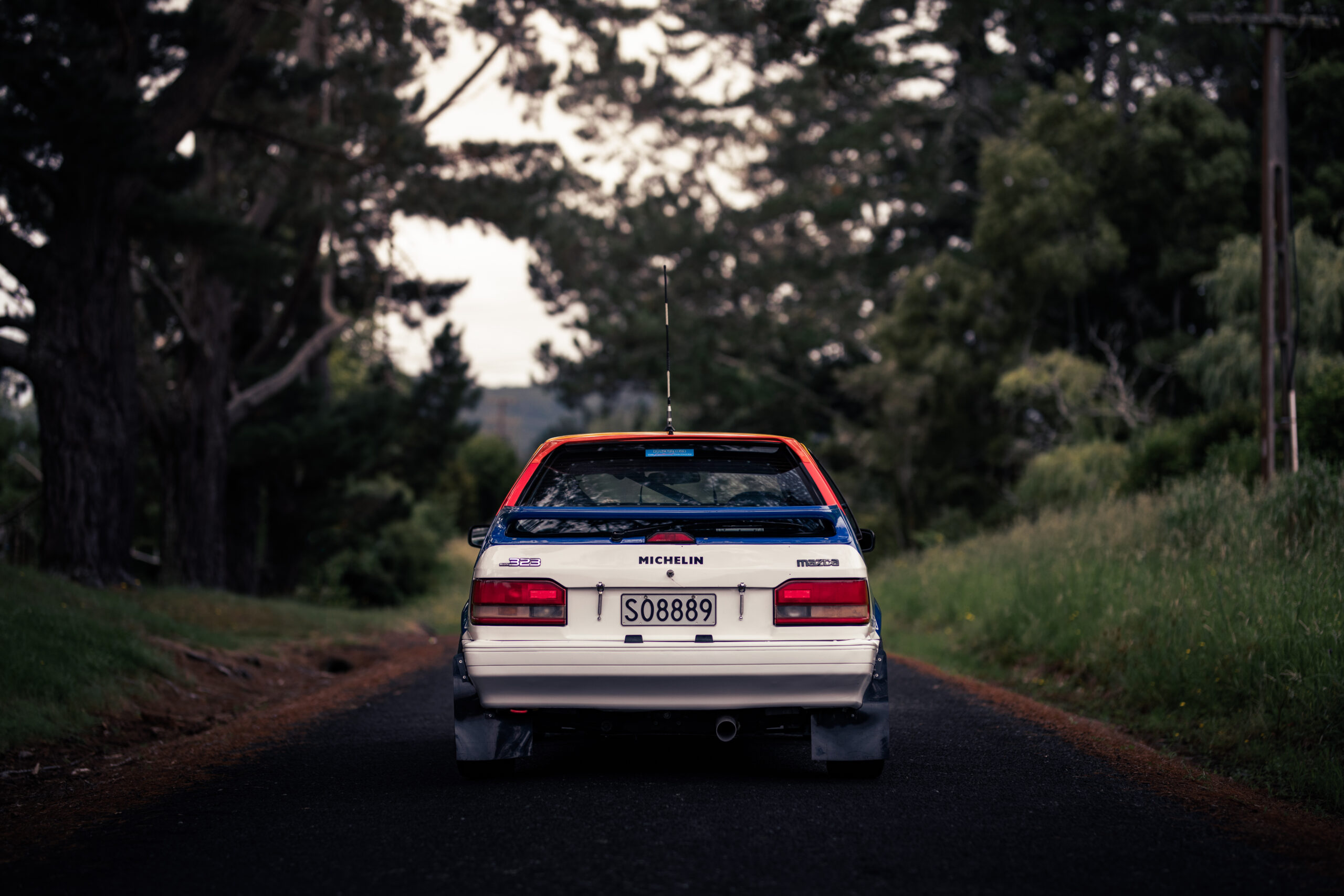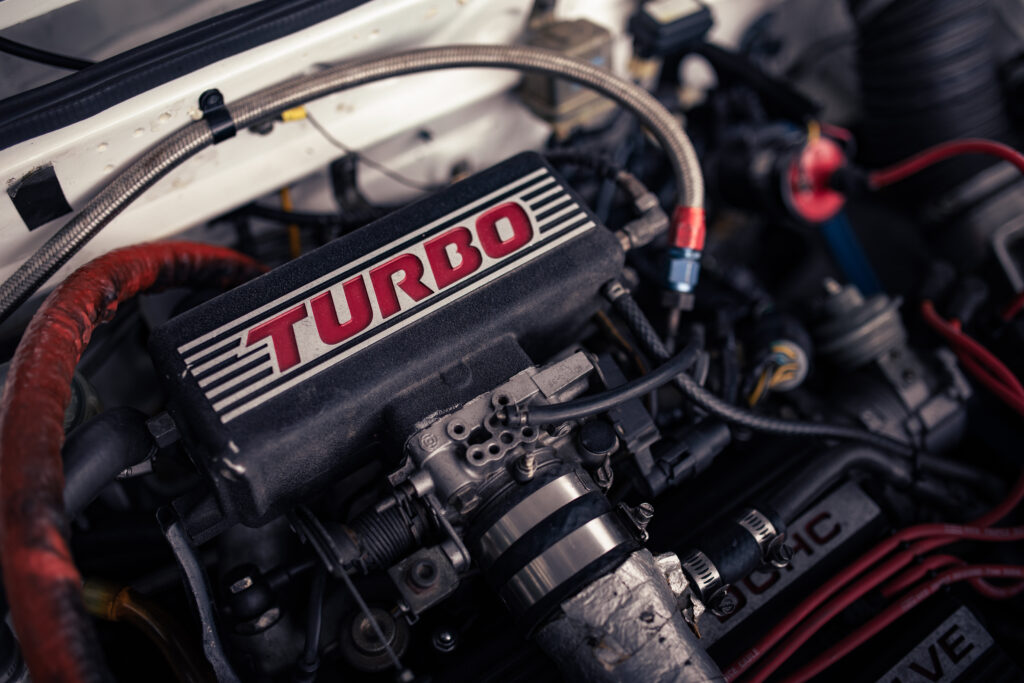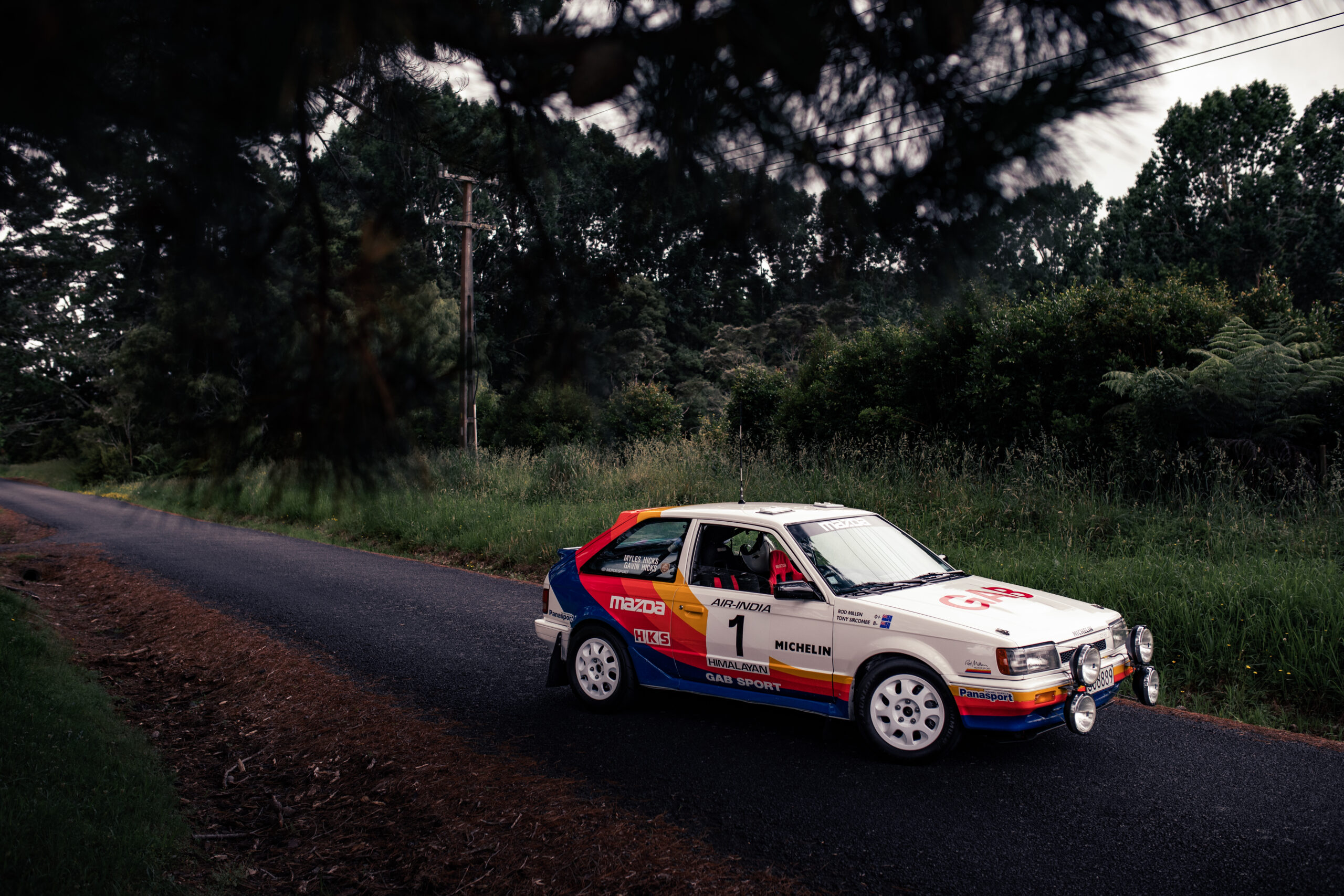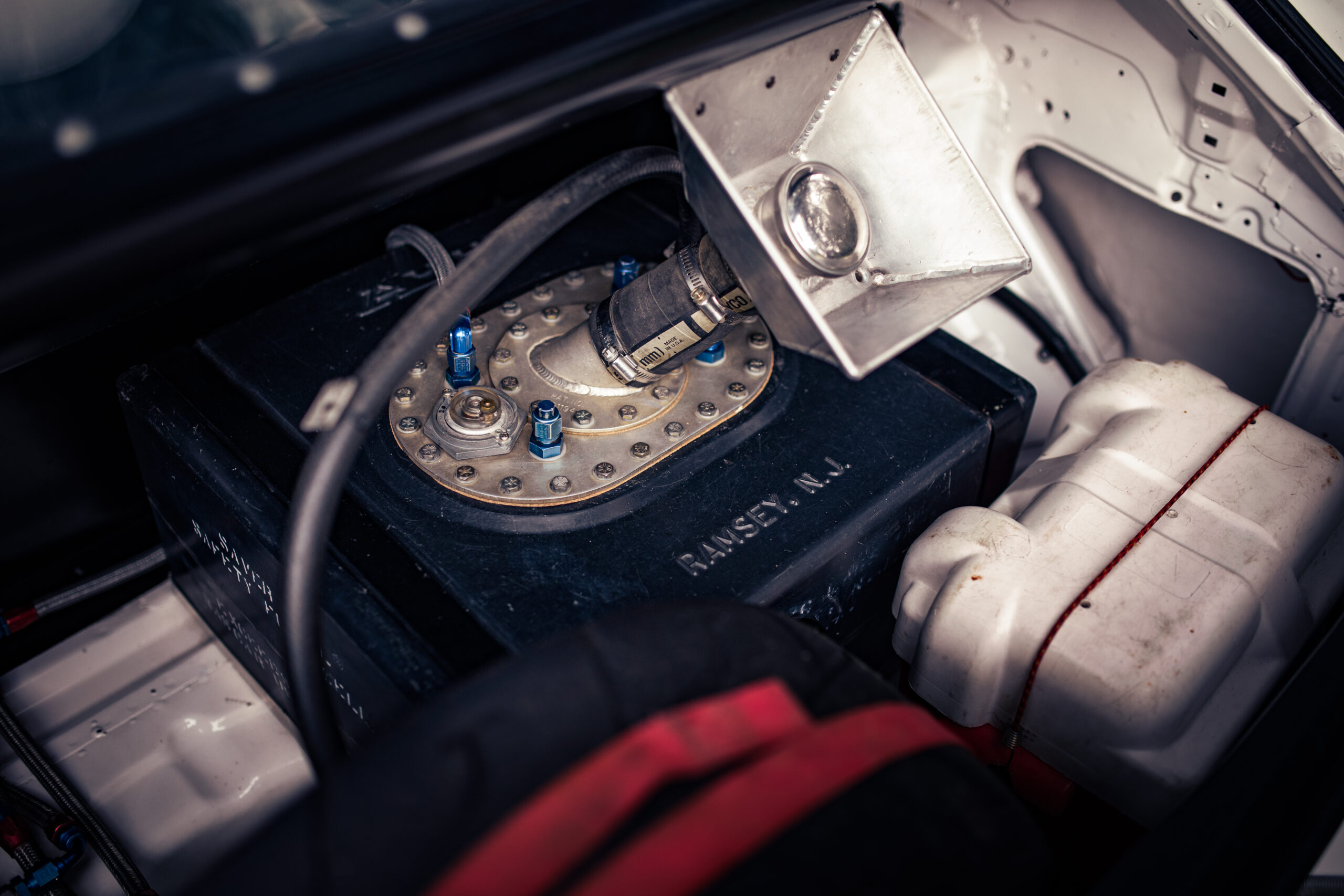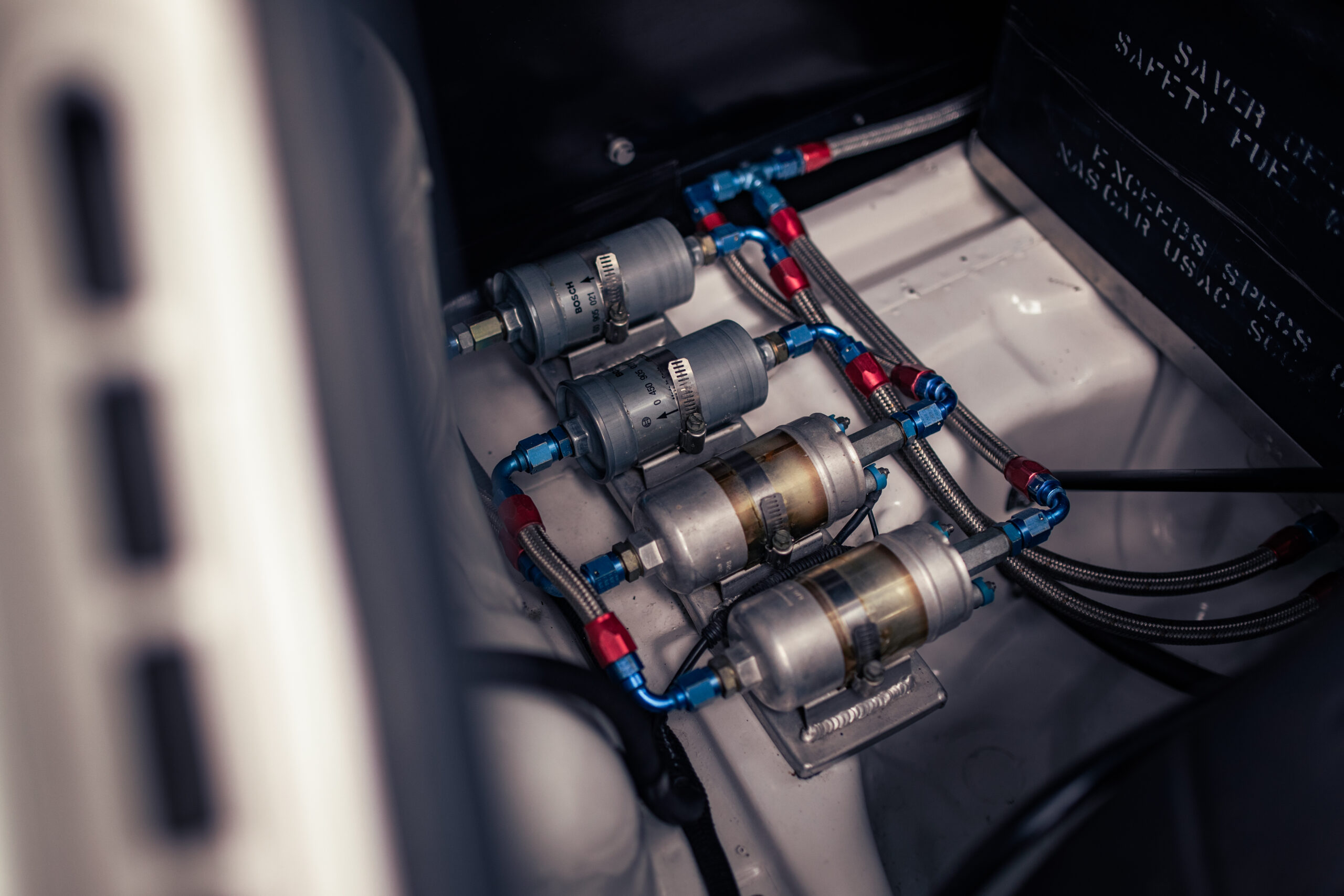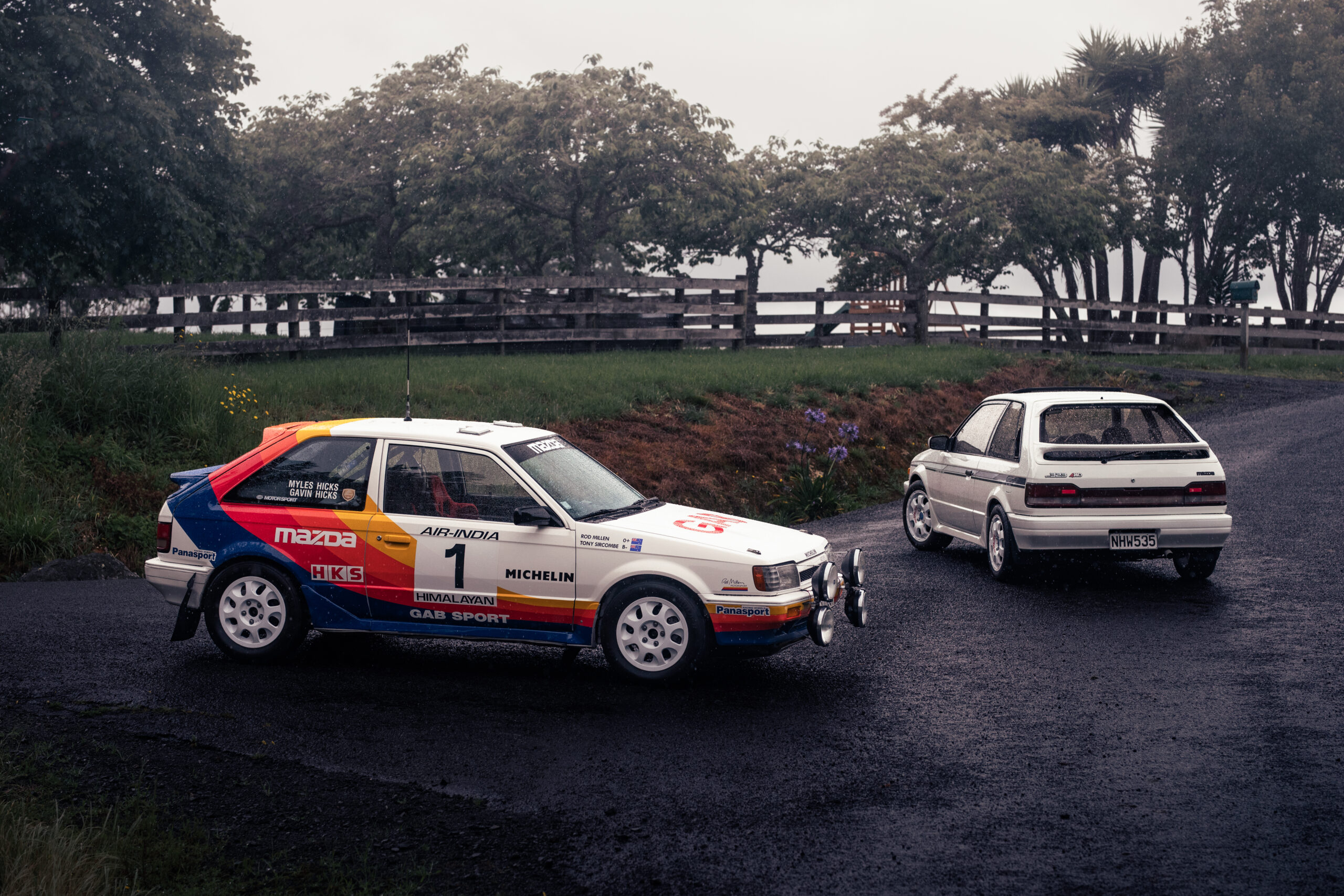Words and Photos: Richard Opie
There’s not too many cars that exemplify the ‘second wave’ of Japanese tuning culture in New Zealand quite like the Mazda 323/Familia Turbo. Kiwis got their first taste of hopped-up Japanese mumbo in the early ’70s with Datsuns, Toyotas, and even Hondas getting amongst the fray on the circuit, gravel, and streets. It wasn’t until the economic deregulation of the late 1980s, including the scrapping of vehicle import tariffs, that the floodgates opened to a tidal wave of attainable JDM treats that’d go on to make quite an imprint on Kiwi car culture.
The humble — or not so humble, depending on how you thought the average Friday night should look — Mazda effectively served as a gateway drug for the turbo all-wheeldrive revolution that would soon come to define the ‘tuner’ sphere on Aotearoa’s shores. The wee ‘DOHCA’ packed a potent set of specs for the budding traffic light GP champion.
A compact 1600cc twin-cam 16-valve engine — the B6T — headlined the act. With around 115kW on tap, she was no speed demon by 2023 benchmarks, but the low 1000kg kerb weight coupled to permanent 4WD meant it’d see off mere Corolla FX-GTs and Civic Si’s from dead stop. Slap on a period-correct hybrid turbo, extra injector, and crank up the boost and they hustled even harder, when they weren’t grenading gearboxes, that is. As much as we’d like to claim the prize, the boundaries of the BFMR chassis weren’t first tested around midnight on Neilson Street, or even in the heady atmosphere of the Melling GP. That accolade goes to Mazda itself, and a specific area of motorsport that would ensure the potent little hatch was etched into the Kiwi psyche a few years prior to the influx of Japan’s discarded performance bargains. The special stages of rallying would punctuate the 323’s impact on the performance car world, and at an absolutely opportune time.
For 1986, the FIA had decreed that the mythical Group B monsters would no longer spark up the stages. Instead, Group A would become the premier class in world rallying, and Mazda’s European-based WRC concern had already cast aside their relatively uncompetitive RX-7 before the sun was setting on the ’86 season, and developing the newly released Mazda 323 4WD as their challenger.
While most manufacturers were scrambling to magic up a 4WD contender, Mazda had a box-fresh option ripe for development. It’s even said that the all-conquering Lancia team viewed the 323 as the major threat heading into the 1987 season, albeit with 400cc less than their venerable Delta HF 4WD. The threat was perhaps somewhat overestimated. Mazda would go on to take three WRC wins with the 323, including one in New Zealand in 1989, but the campaign was plagued by poor management and initial reliability problems, including — you guessed it — gearbox breakages.
It wasn’t only the Europeans forging ahead with the 323, though. Expat Kiwi Rod Millen adopted the 323 as his primary rallying machine from late 1986 onwards. Millen would choose his own path, and develop his own machines within the Group A homologation rules, destined to hit the gravel in the USA and Asia Pacific rallies. Millen would even take a 323 to victory in both the 1988 and 1989 SCCA Pro Rally championships, but arguably the greatest accomplishment for his left-hook, USA-built hardware was stepping to the top of the podium for the 1989 Asia Pacific Rally Championship (APRC). Winning the APRC was no mean feat. While not as gruelling as the full WRC calendar, the APRC packed in five events from July to November, with full FIA backing and a complement of the world’s best Group A cars and drivers all vying for the win.
By this time, the 323 was a relatively well developed car, and Millen in fact used a pair of them to win the championship. One car, originally registered OL4090, would be used in New Zealand and Australia, while the other, OL4091 — the car you see here, now restored and owned by Myles Hicks — would see service in Indonesia, Malaysia, and India. The latter rally, called the Himalayan Rally, would be the sole victory scored by Millen, an indicator no doubt of a consistent season behind the wheel. Both Myles’ car and the sister car were built at the Rod Millen Motorsports base in Huntington Beach, California. In fact the key for the main shutoff still bears the key ring of a nearby service station, a weathered throwback to the Mazda’s origins as a brand spanking new, left-hand-drive car stripped down and built up for rally duties.
The car ended up back in New Zealand around 1990, following a period of being largely laid up, imported by Richard Kelsey, a bloke who’d worked for Millen and had driven some of his RX-7s prior. The Mazda would receive a conversion from left to right hook, and was sold on to Roger Goss, running a couple of seasons in the local championship with a fresh CRC livery, bearing the plates CRC1. Clearly a couple of seasons were enough for Goss, as by ’92 the 323s, despite being a common sight on Kiwi rally stages, were becoming a less competitive prospect in the face of more highly developed, and higher capacity 2-litre turbo AWD machinery that became the Group A norm. Nevertheless, the 323 would still be useful as a club level car — despite its ex-Millen credentials — and it was duly purchased by Eddie Braun. Braun would only run the 323 for a short time, before Myles got his hands on it.
“I got it just in time I think,” he explains. “The car was still largely untouched from its original form, and Eddie had just started ‘lightweighting’ it, by chopping the frame out of the bonnet!” Acquiring the 323 was almost by chance for Myles, as it turns out. “We’d entered the 1995 Targa. We were going to use the Datapost Escort [touring car], but it needed a bit too much work to get there and we couldn’t make it. We got the entry transferred to ’96, so we were looking for a car, and the 323 came up. I wasn’t looking for it specifically, but I knew the car, and we grabbed it,” explains Myles.
“I actually swapped a Series 4 RX-7 turbo for it!” Myles is a man with a bit of an appreciation for history, and the fact the car had the Millen history only added a bit of weight to his decision. “I’d actually seen the car at a motorshow a few years earlier when Roger Goss had it,” he says, “and I had a good look around it, and realised how original the car really was. When we got it, you could see it’d done relatively little work.” The fact the car wears its original interior paint is testament to how well the 323 has weathered the sands of time. Surprisingly for a career rally machine, the 323 even retains its original floors and chassis rails in excellent condition — a rarity for competition cars that lived a life on the gravel.
The rebuild was a relatively straightforward task. “Painting it was probably the biggest job,” says Myles. “It wasn’t stripped to a bare shell but we tidied up the underside, gave the engine bay a going over, and returned the exterior to its 1989 livery.” That livery is pretty iconic Millen stuff, the stripes that had distinguished his Mazda rally cars since the early 1980s, and one that was lurking just beneath a couple of layers of white paint, as it turned out.
“As we sanded, we could see the original painted livery underneath, so it made matching the colours, and getting the stripes ‘right’ so much easier,” says Myles. Those stripes are actually painted on, as per its period spec — no vinyl wraps here! Otherwise Myles reckoned it just needed a bit of a service, as the running gear was in pretty solid order.
With around 195kW on tap in Group A spec, the engine is a step up from a production B6T unit. Beefed up internals, a larger intercooler, and a Group A specific turbo all contribute to the power bump needed to compete at the pointy end. The engine bay is awash in heat management, from the bespoke airbox and intake near the windscreen cowl, to the intercooler piping wedged between the cam cover and bonnet. But it’s the engine management that piques interest, with the Millen team electing to get the Japanese aftermarket on board in the form of an HKS PFC F-Con piggyback controller, complete with rudimentary potentiometer-type tuning dials on its remote unit. The PFC itself stacks neatly into a ‘rack’ style arrangement with the factory ECU, in lieu of a centre console. It’s an install that screams ’80s, as well as lending itself well to maintenance.
Underneath, Myles reckons the car is surprisingly close to stock. “The subframes are all factory. It does have some lengthened control arms, and of course the hubs are uprated to larger five-stud units, but that’s really it.” In period, Millen’s cars benefitted from suspension supplied by GAB, another Japanese aftermarket outfit, the brand beaming bright from the 323’s bonnet.
Inside, it’s pure rally car stuff. The boot is chocka, full of spare tyre and fuel cell, separated from the cabin by an alloy bulkhead, one key area where Millen’s cars differentiated from the European machinery. There’s gauges for everything the occupants could want, the dash peppered with a selection of Stewart Warner and VDO offering up real-time info, from boost and fuel pressure, to oil temp in engine, gearbox, and diff. It’d be a crime not to mention the period Terratrip rally computer too — an aesthetic of a past that looked toward a computerised future. With a fresh 323 underneath him, Myles made it to the Targa NZ starting ramp in 1996. “It wasn’t really suited to the Targa stages — it’s only geared to go 160km/h so we’d get monstered on the fast stages by Porsches and things doing well over 200km/h,” he says laughing. “There was a stage around Murupara, f**k it was fast, and these guys were going around us at 240-250km/h!”
Myles and the Mazda made up a bit of time in the twisties though, enough to finish second in the modern 4WD category, completing every single stage along the way. The Mazda would return for 2000, the biggest Targa to date with 220 starters, and a route that ran over seven days. Myles’ team would win the overall team prize, while the Mazda would finish 38th overall — to date the end of its competitive career, with Myles bringing it out for exhibitions on occasion since. It’s a damp afternoon, somewhere near the Hunuas when I’m in the hot seat. Sitting behind the wheel of a championship winning car — one driven by a personality as prominent as Millens — is somewhat daunting, although that chill of excitement fizzes down your spine as you settle in, and familiarise yourself with the control layout.
Myles coaches me through the start-up procedure, and the 323 crackles to life in classic rally car fashion. There’s something about a small-capacity turbo four-pot breathing through an unmuffled exhaust, and it settles into a rowdy lope. Race car clutches can be a terrifying prospect. The Mazda’s really isn’t. Sure, it’s not feather light, but the AP unit engages smoothly, and we’re off at a dignified, albeit rowdy pace. The ride is surprisingly stiff. I’m unsure what I expected really, but the GAB dampers are uncompromising at my fairly sedate pace, smoothing out as the speed picks up. And it picks up pretty quickly — or at least feels like it — due to the closely spaced ratios of the Mazdaspeed competition gearset. The little 1600 streaks through the gears, the factory tacho swooping towards redline as you reach for the next cog in the H-pattern gearbox.
Steering is direct and precise; there’s no power assistance here. The Sumitomo four-pot callipers bite from cold with a progressive pedal, and it’s all too easy to visualise sawing at the wheel as the Mazda leaps from apex to apex on a typically cambered Kiwi special stage. For a moment, I’m Rod Millen, hammer down, focused on the strip of road ahead, chopping gears, and revelling in the sensory resonance of the Group A Mazda experience. Kiwis took the BFMR to the streets in droves, but it’s that rally-bred pedigree that allowed it to happen. No matter which way you prefer it, the little Mazda is a figurehead of ‘import’ performance. A hi-po hatchback that’s etched into the mindset and history of Kiwi tuning culture.
_________________________________________________________________________________________________
This article originally appeared in New Zealand Performance Car issue 304





